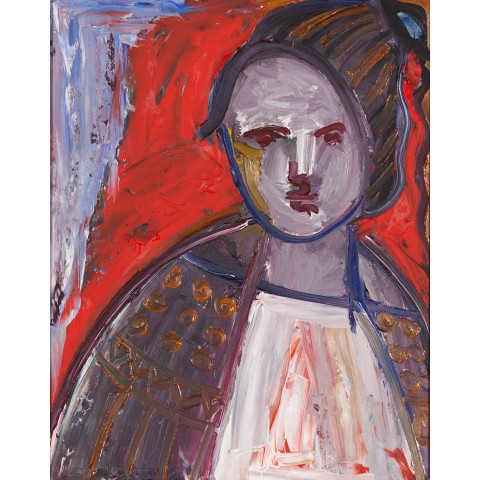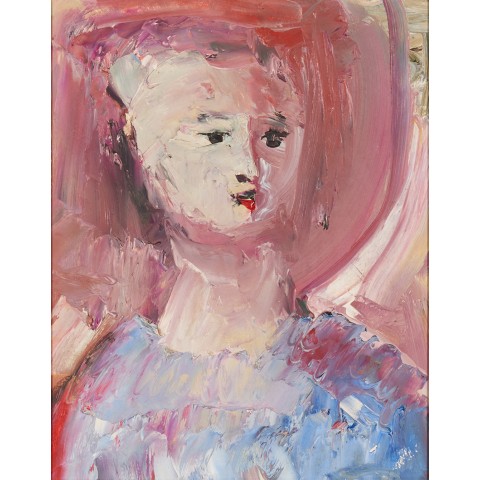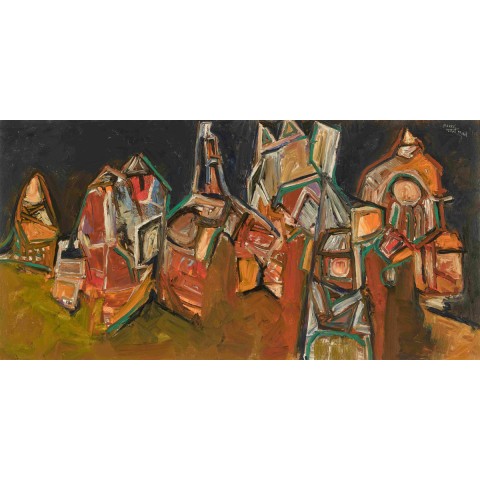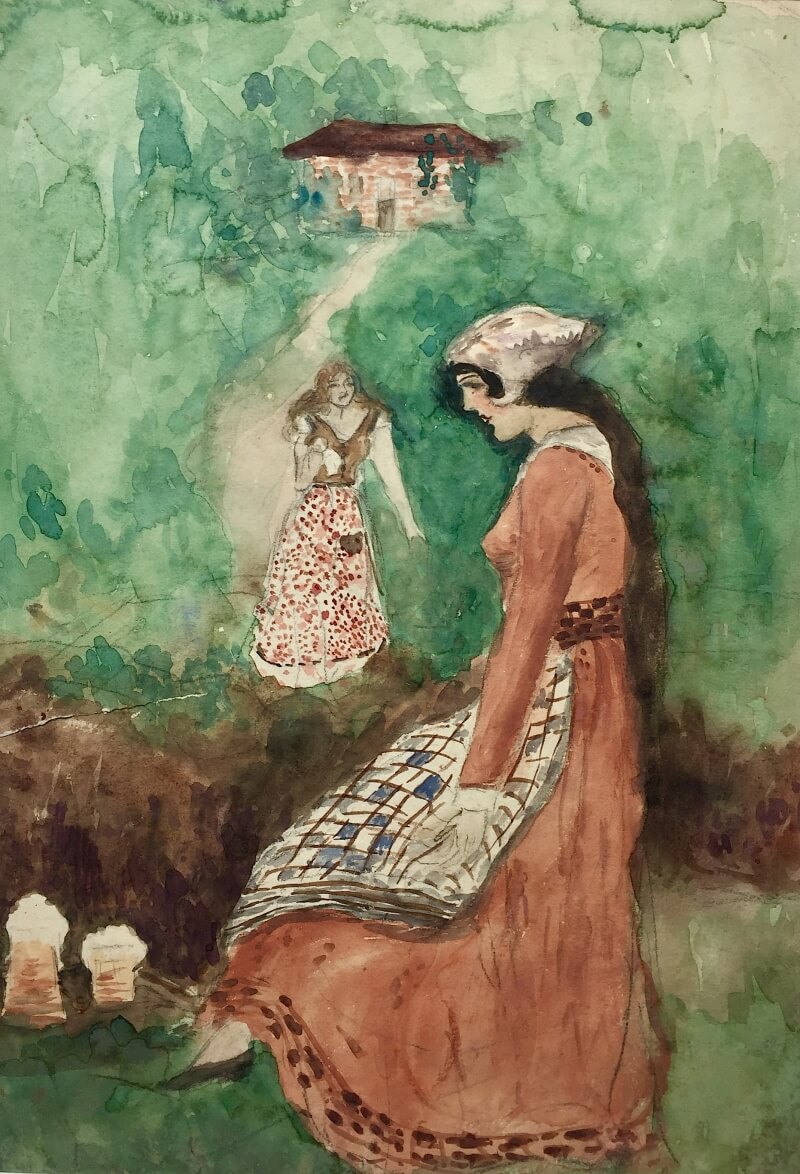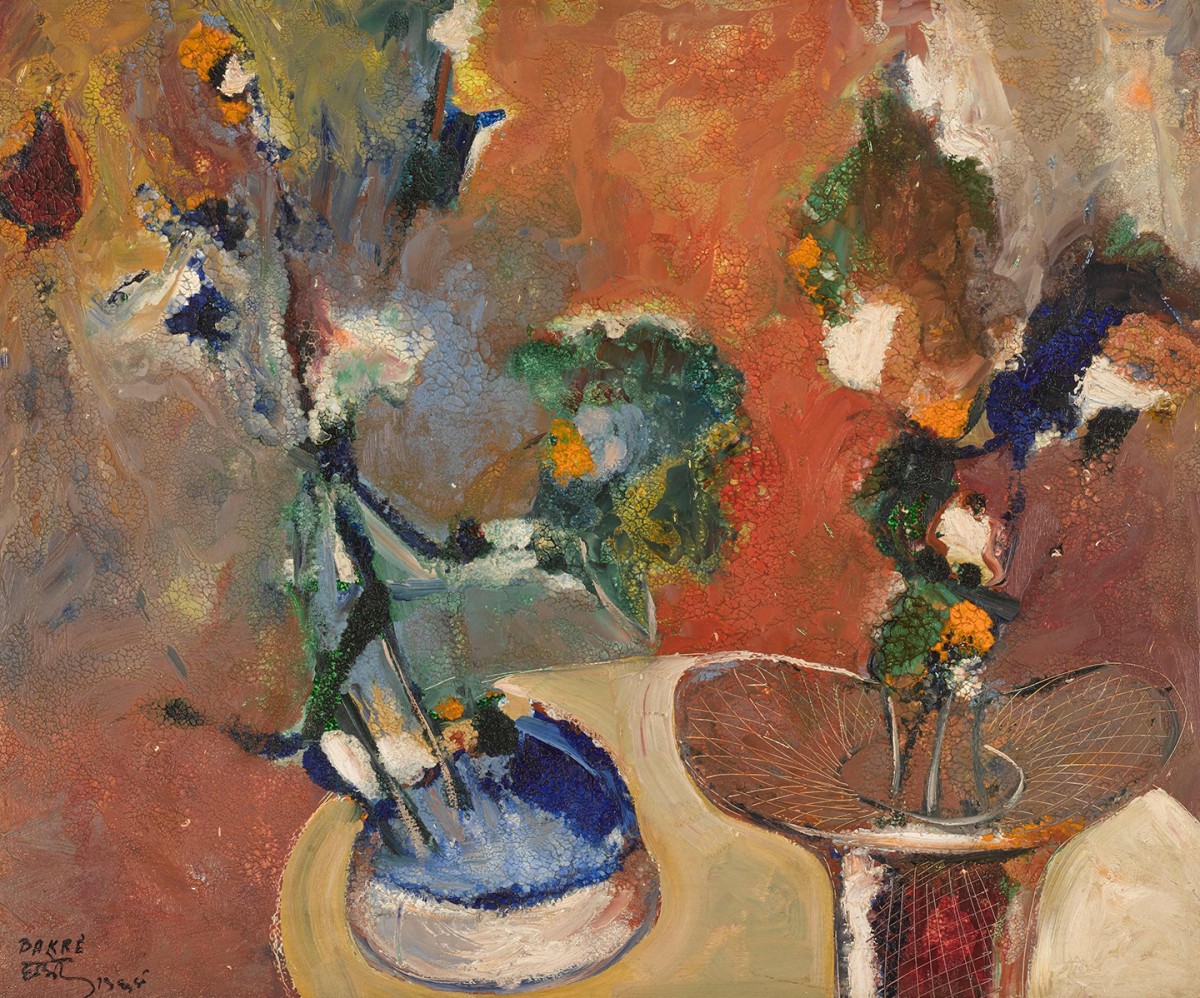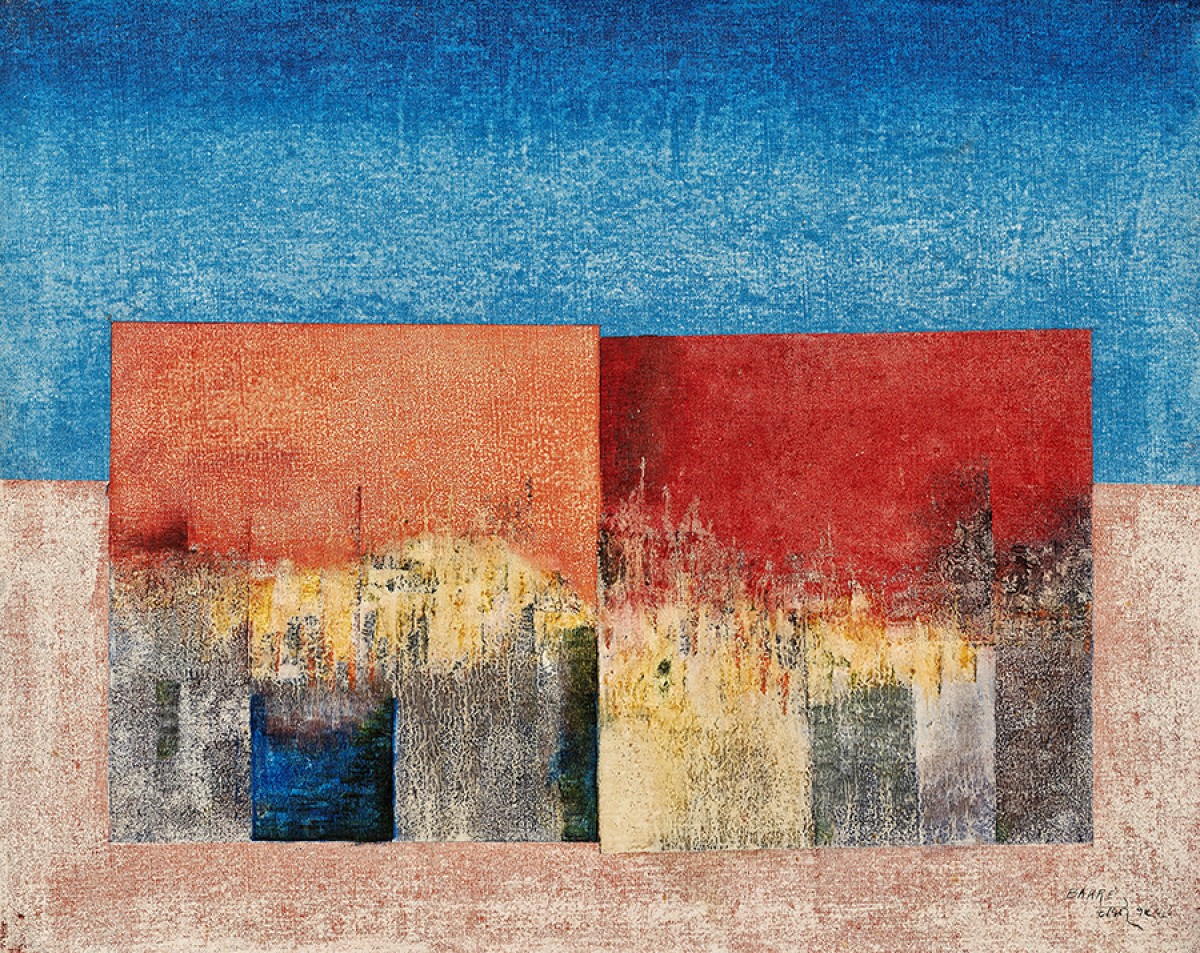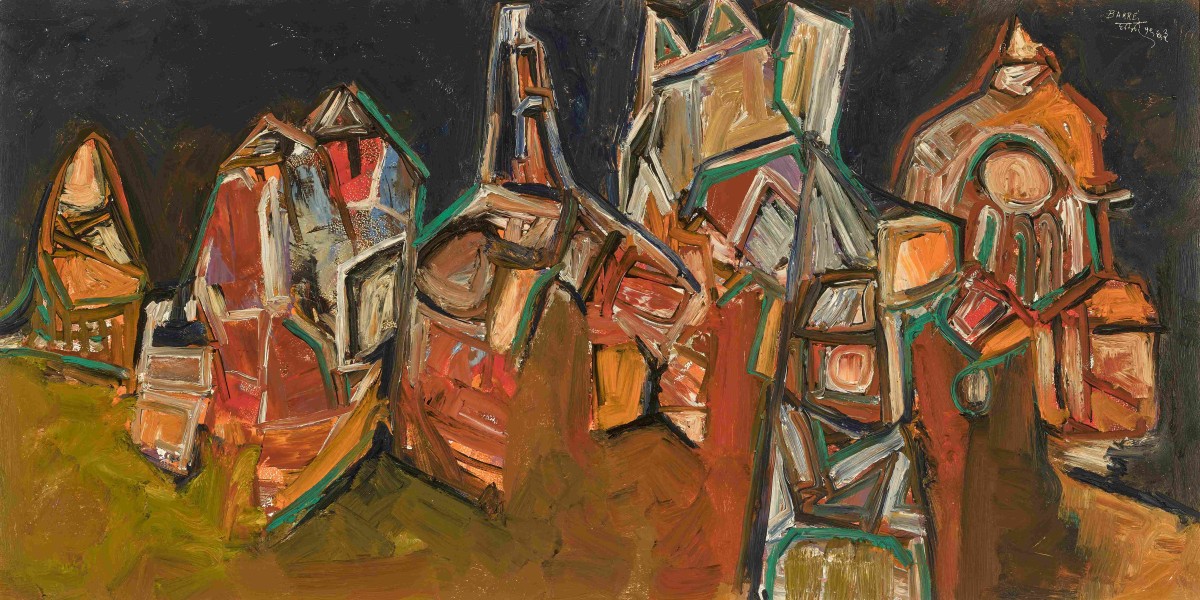
SADANAND BAKRE
Akara Modern
1920 -2007
Sadanand K. Bakre was born in Baroda in 1920. Bakre began studying sculpture at the Sir J.J. School of Art in 1939. He experimented with several sculptural techniques, and his inventiveness was quickly noticed. As a result, his sculptures at art shows brought him several medals. In 1944, he was given the Lord Harding Scholarship and graduated with a diploma in sculpture.
Bakre, along with Souza, Raza, Husain, Ara and Gade
was one of the founding members of the Bombay Progressive Artists'
Group, the pioneers of modern art in India and participated in
their early shows, before travelling to Britain in 1951, where he gave up
sculpture and concentrated on painting.
Bakre's talent was encouraged by the leading art
critic Rudy von Leyden, who introduced him to the modernist movements in
America and Europe. Like many of his generation, Bakre's development as an
artist followed the trajectory of moving from academic realism to abstraction,
in his paintings as well as his sculptures. The decade of the 1960s was one
which saw the evolution of Bakre's vocabulary and style. From "spiky
forms," he had, by the late '60s, moved to more simplified forms with a
growing interest in structure. His works were small in nature but was
expressive and creative using a variety of materials. The sculptural figures
had clean cuts and excellent curves. His skill as a sculptor and his power of
compelling images as a painter were unique.
In 1975, the artist eventually made his way back to India after living in Europe. He eventually turned into a recluse, but in 2004 the Bombay Art Society awarded him a lifetime achievement award. Bakre died in 2007.
Images

